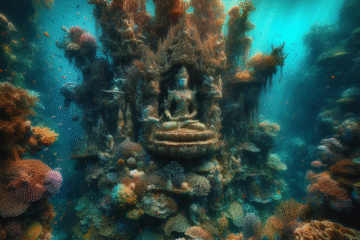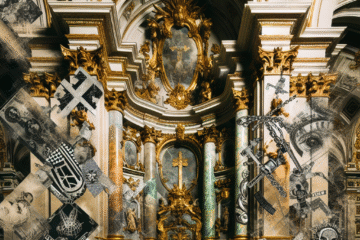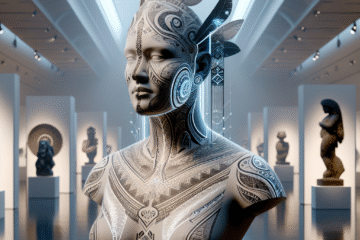
Image title: The Adoration of the Magi
Medium: Distemper on canvas
Date: 1472–74
Source:
The Met Collection
“
The thoughts we choose to think are the tools we use to paint the canvas of our lives.
”
— Louise Hay
‘Fossils of Expression’: Why Some Artists Paint Extinct Species
Introduction: Painting What No Longer Lives
Art has always had a complicated relationship with time. While photographs capture a split second and sculptures suggest timelessness, painting can stretch chronology—revitalize the past or imagine the impossibility of the future. Among the most haunting genres within this temporal spectrum is the art of extinct species: from Cretaceous dinosaurs to recently vanished avians. These are not simply scientific illustrations but visual meditations on memory, absence, and planetary change. This blog delves into the layered history of such works, from early scientific renderings to contemporary eco-critical elegies, tracing how artists and epochs have wrestled with extinction.
Chapter 1: Victorian Visions – The Birth of Paleoart
The mid-19th century saw a blossoming of interest in prehistoric life, spurred on by fossil discoveries and the rise of paleontology. One of the genre’s earliest and most iconic practitioners, Benjamin Waterhouse Hawkins, collaborated with scientists to create life-sized reconstructions of dinosaurs for London’s Crystal Palace Park in 1854. These chimeric creatures, though scientifically outdated today, were rendered with a romanticism that captured Victorian fascination with deep time and divine creation.
In these works, artists walked the tightrope between empirical illustration and imaginative reconstitution. The creatures they painted had never been seen alive, which lent these works a spectral quality—a visual echo not only of vanished animals but of humanity’s desire to resolve mystery through image.
Chapter 2: Modernism and the Sublime – Between Fantasy and Fossil
By the early 20th century, artists began engaging with extinct species through the lens of modernism. Influenced by surrealism and symbolism, depictions of extinct creatures evolved from accurate portrayals to dreamlike evocations. The line between metaphor and morphology blurred. Painters such as Salvador Dalí offered amorphous, skeletal creatures resembling both prehistoric fauna and disintegrating human bodies—suggesting that extinction was not merely biological but existential.
At the same time, natural history museums became modern cathedrals of fossil worship. Dioramas served a dual purpose: as scientific education and as a form of public art, embedding extinct life into collective memory. These static theaters reinforced both the majesty and fragility of life over geological time.
Chapter 3: Post-War Melancholy and Eco-Anxiety
Following the devastation of two world wars and the nuclear age’s onset, extinction gained a new resonance. Artists began reflecting not just on natural disappearance but human-induced annihilation. Rachel Carson’s “Silent Spring” (1962) catalyzed a wave of ecological awareness, influencing artists to use extinct animals as symbols of environmental loss.
Contemporary painters like Alexis Rockman juxtaposed extinct or endangered animals with polluted, dystopian landscapes. The past was no longer merely lost—it was sabotaged. The extinct animal became an ethical icon, a ghost whose death we mourn and whose memory we indict ourselves with.
Chapter 4: Digital Resurrection – Technology and the Neo-Paleo Renaissance
In the 21st century, digital tools have revolutionized paleoart. Hyperrealistic renderings of extinct species—created with 3D modeling, AI-enhanced reconstructions, and VR simulations—have transformed viewers into virtual time travelers. These artworks often blend speculative biology with contemporary scientific breakthroughs, such as CRISPR or cloning debates, making them deeply philosophical commentaries on what it means to bring the dead to life—at least in image.
Artists like Julius Csotonyi and Sergey Krasovskiy create immersive paleo-scenes that are more than illustrations; they are portals. And in doing so, they question the line between visual resurrection and digital myth-making. What happens when we render the extinct so vividly that they begin to feel contemporary?
Chapter 5: Fossils as Allegories – Art, Philosophy, and Mortality
Painting a dodo or a woolly mammoth is no longer just an act of historical reconstruction—it is often a gesture toward self-awareness. The extinct being serves as a mirror, reminding us of our own ephemerality. From the vanitas paintings of the Renaissance (laden with skulls and decaying fruit) to today’s extinction art, the theme of mortality runs deep.
Contemporary projects like those of artist Maya Lin’s “What Is Missing?” memorialize vanished ecosystems, creating hybrid installations that fuse archival testimony, raw data, and visual art. These works transform memory into activism, aesthetics into remembrance. The fossil becomes not just a relic, but a warning.
Conclusion: Alive in Absence
Why do artists keep painting extinct species? Because absence is a compelling subject. Because images can restore form to what lacks breath. And because in painting something gone, we confront that which haunts all art—the tension between permanence and impermanence. Just like fossils, these works become strata of meaning, layered with fear, reverence, beauty, and warning.
To depict the extinct is to place a brushstroke across the face of time itself. In doing so, artists remind us that while species may vanish, our imagination resurrects, commemorates, and perhaps in its own way, resists forgetting.



